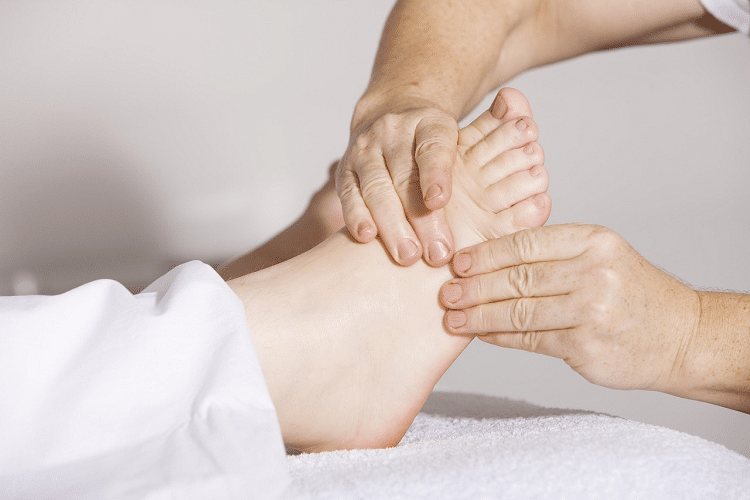
Your Guide to Spinal Decompression
Otherwise known as Nonsurgical Spinal Decompression, it is a kind of traction that helps relieve many kinds of back pain. It works by gently stretching the spine to decrease the pressure on the discs and joints. Your discs are made of cartilage that acts as shock absorbers between the vertebrae to help protect your spinal cord and prevent any bone contact with your spinal nerves. Often, these discs can bulge or become flattened by injury, pressure, or genetic factors and the result can be very painful. When a disc bulges or herniates, it can press against nearby nerves causing moderate to debilitating pain. In some cases, degeneration of the disc and arthritis of the spine can cause a dramatic loss of strength in the arms and legs, frequent numbness, and severe pain.
Our custom spinal decompression machine will slowly and safely stretch your spine creating negative pressure between your vertebrae. This slow, steady pull off your lower back causes bulged discs to retract, while increasing local blood flow, oxygen, and nutrients to any damaged tissues. The results are less pain and better mobility over time with multiple decompression sessions. Some examples of conditions that may be treatable with spinal decompression are:
- General back or neck pain
- Sciatica (pain, weakness, or tingling felt down the legs and/or feet)
- Bulging or herniated discs
- Degenerative disc disease
- Worn spinal joints
- Injured or diseased spinal nerve roots
- Whiplash or car accident injuries
Additions & Alternatives to Spinal Decompression Therapy
Though spinal decompression is still being tested and researched to fully realize its benefits and risks, medical professionals agree that it should be included in the list of nonsurgical approaches to back-related issues. They also advise that these items be considered in your road to recovery as well:
- Chiropractic care
- Massage Therapy
- Physical therapy
- Exercise
- Limited rest
- Acupuncture
- Bracing
- Ibuprofen or other Nonsteroidal anti-inflammatory drugs (NSAIDs)
- Steroid Injections
How Spinal Decompression is Performed
Patients are on their backs in a relaxed position harnessed into the table around their hips. The doctor will target the specific spinal level of involvement to produce the fastest results possible. Many patients experience pain relief within the first 5 treatments. The machine itself is computer controlled so once you are properly secured, your doctor will customize the computer settings to fit your needs and match your body type. A typical treatment will take between 3o minutes to an hour and there may be additional therapeutic elements added to the procedure such as:
- Heat and/or Ice therapy
- E-Stem (electric stimulation typically for muscle relief)
- Ultrasound (used to generate heat deeper in your tissue)
Depending on your specific prognosis, treatments may occur several times a week for many weeks or significantly less. If you have back pain and you have tried other methods without the desired results, or you believe this should be a part of your recovery process, we highly recommend seeing a chiropractor. Spinal decompression therapy may the right choice for you.






